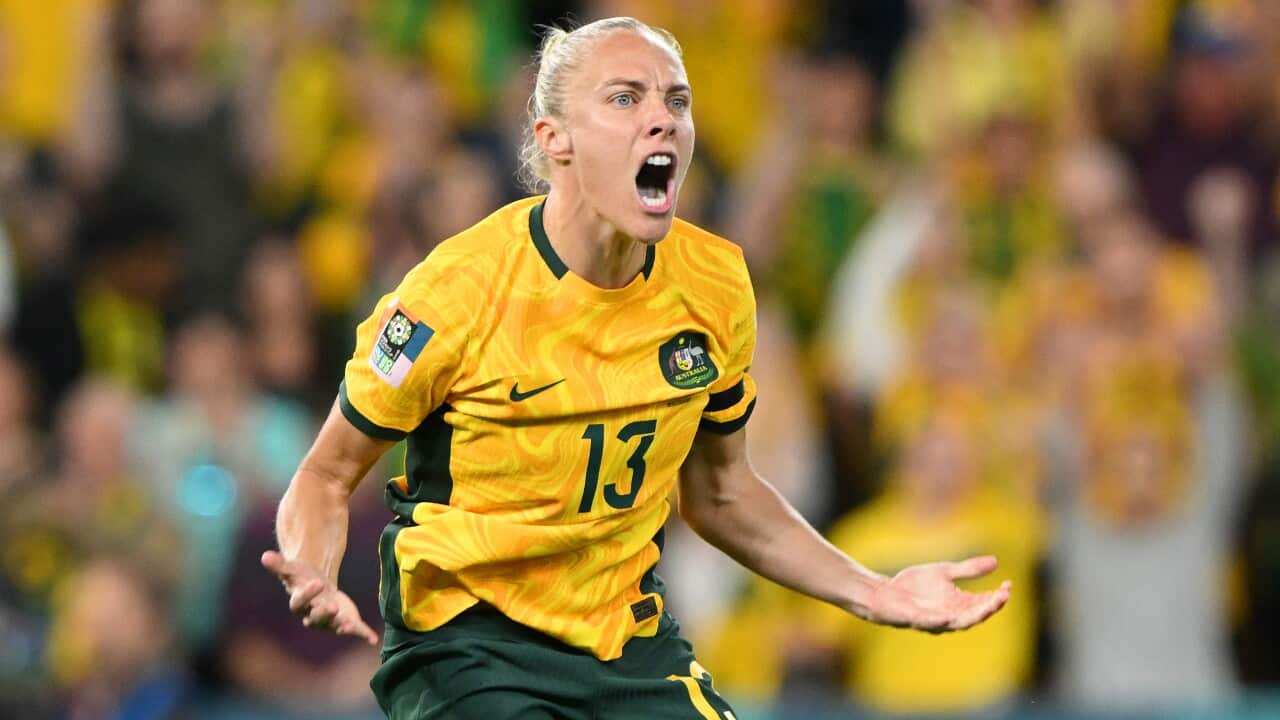The third time’s the charm. That’s what Tameka Yallop is hoping ahead of the Paris Olympics with the Matildas as part of a tight 18-person squad.
The 33-year-old has been with the Matildas since 2007 and has worn the green and gold more than 150 times.
It will be Yallop’s third Olympics, having last competed at Tokyo 2020 (held in 2021 due to the COVID-19 pandemic).
But this time around, preparation has been a little different. The Matildas have been able to have family members at training camps — with this having been permitted some time after the 2020 Games.
Yallop said this has been game-changing for her and her team — and it may be their secret weapon.
The midfielder spoke to SBS News about how the Matildas squad vibes have gotten more competitive, and her role as a player ambassador.
Q. You’ve been to the Olympics before, how does this one feel different?
A. We’re all a lot older, and I think off the field, but also on the field, we’re at that really competitive stage. So I think this one’s a little bit different in terms of, we’re going in with competitive confidence instead of it being our first Olympics, and just the hype of the Olympics in itself. So I think we’re going in with a clear goal and a lot of drive and determination to make an impact.
Tameka Yallop made her debut for the Matildas in 2007. Source: AAP / Russell Freeman
Q. You’ve brought your daughters to many games and Matildas events. What does it mean for you to be able to bring your whole family to work?
A. I think it’s quite unique. It’s actually been so amazing and something that’s probably made us a little bit more competitive, a slight change in our environment, because when you’re playing at the elite level, everything is so intense and so serious, and that can be really, really draining.
It can also be hard for players to switch off mentally and emotionally, detach from football and recover. I think having an environment where you can bring family in — and for me, that’s my partner and my daughter. For others, it could be a sister that’s nearby, depending on where we’re playing, or it could be your mum or something like that — where they’re able to come and have a coffee at your hotel or something like that.
Tameka Yallop with her daughter Harper during the 2023 Women’s World Cup. Source: AAP / Darren England
I think it’s gone a long way in allowing players to relax and have those moments. Other people might finish their job at five o’clock and they can go home and switch off from work. Whereas, when you’re in a camp environment, it’s 24/7.
The environment we have, where we do allow family and I guess a mental and emotional break from football, in those really competitive environments, has helped us become more competitive.
Q. What’s been the impact of the 2023 Women’s World Cup?
A. It’s no longer just young girls looking up to you, but also young boys. And it’s their parents too, who say they are grateful for their children having role models on a platform they haven’t seen before.
And having female heroes, as well as male heroes. I think that has amazed a lot of people, who are grateful because their kids have those sorts of role models to look up to.
Q. In your role as a Professional Footballers Australia ambassador, you’ve talked about how the World Cup raised some issues about excessive demand on players and crowded schedules. What’s the scope of that problem?
A. There’s kind of a bottleneck with major tournaments, and I guess elite-level games like Champions League finals, and high demand from players.
There are a lot of players that don’t get one day off or two days off. Then you’ve got a lot of other players that are demanding more game time and more opportunities as well. Those will probably be the players that are playing outside of Europe.
We’re thinking about how we can make the competition or competitive opportunities a lot more even and spread out for players, and other clubs and leagues as well.
They’re the discussions we’ve been having with FIFA, and trying to get a player’s voice in that to prevent player burnout and injuries. I think we’ve seen far too many injuries in the last, you want to say two years, but it’s probably been going on for a lot longer than that.
Q. What actually happens when you play too much football? What are the consequences?
A. The higher you’re loading, the more likely you are to get a major injury. But I think it goes beyond that and into later in life when you retire. When you’ve put so much pressure on your body for a sustained period, you sort of have ageing difficulties.
It’s not down to just playing football, it’s overplaying and not taking care of loading and resting your body when it needs rest. And I guess playing too much in a short period and overworking.
The Olympics is difficult — it’s a tight tournament, and it’s fewer players as well. So I think going in, you already know that it’s going to be a tough tournament, and it is one that puts pressure on your body. It will definitely be a talking point, but I think it goes beyond this tournament as well.
We need to look at it as a holistic approach and things are scheduled two years in advance, so how can we affect what’s going to happen after and where can we best try and push the impact that we can have?
Some answers have been edited for length and clarity.


